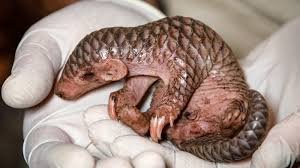
what sound does a giraffe make
Giraffes are some of the most majestic and mysterious creatures on Earth. Known for their incredibly long necks, towering height, and graceful movements, giraffes have long fascinated zoologists and wildlife enthusiasts alike. But there’s one question that seems to puzzle many: What sound does a giraffe make? Unlike lions that roar or elephants that trumpet, giraffes don’t have a well-known or easily recognizable call. This has led to many people believing that giraffes are completely silent. However, recent research has shed light on this enigmatic behavior, revealing that giraffes do, in fact, make sounds—just not in the ways we might expect.
The Myth of the Silent Giraffe
For years, it was commonly believed that giraffes are mute animals. This belief originated largely because giraffes are not known to produce loud, distinctive sounds in the wild. Visitors at zoos rarely hear giraffes make any noise, and safari guides don’t often report hearing them vocalize on the plains of Africa. This absence of audible communication led to the myth that giraffes are silent. However, silence doesn’t mean the absence of communication. Just because humans don’t easily hear giraffe sounds doesn’t mean they don’t exist.
Low-Frequency Communication
One of the key discoveries in recent years is that giraffes may communicate using infrasound—that is, sound waves at frequencies below the threshold of human hearing (typically under 20 Hz). These low-frequency sounds can travel long distances and are often used by large mammals such as elephants and whales. In the case of giraffes, researchers have used sensitive audio equipment to detect low humming and rumbling noises, especially at night. These vocalizations are believed to play a role in social bonding, navigation, and maintaining group cohesion.
Types of Sounds Giraffes Make
Although they don’t have a broad vocal range like some other animals, giraffes do produce a variety of subtle and often unheard sounds. These include:
Humming
One of the most fascinating sounds giraffes make is a deep humming noise. Researchers studying giraffes in zoos recorded them humming during the night, often when no humans were around. These hums are at a very low frequency, typically around 92 Hz, and can last several seconds. The purpose of this humming isn’t fully understood, but it may be a way for giraffes to stay connected when visibility is low or when they’re sleeping.
Snorting and Sneezing
Giraffes also snort or sneeze as part of their behavioral repertoire. These sounds are more audible and can be heard during times of alertness or as a reaction to a sudden environmental stimulus. A giraffe might snort if it senses a potential predator or if it’s startled by something unexpected. This behavior is similar to other ungulates like antelope and deer.
Bleating
In rare instances, especially among young calves, giraffes may produce a bleating sound that resembles that of a sheep or goat. This is more common during distress or when a calf is separated from its mother. The mother might respond with a grunt or another soft sound, indicating that giraffes do communicate vocally in certain social contexts.
Grunts and Moans
Adult giraffes have occasionally been observed producing grunts or moaning sounds. These are typically low and not very loud, but they are believed to serve as social signals among herd members. Some scientists think that giraffes may grunt to assert dominance, express discomfort, or communicate readiness for mating.
Why Are Giraffe Sounds So Rare?
There are several theories as to why giraffe vocalizations are so rare and quiet compared to other animals:
- Anatomical structure: Giraffes have extremely long necks and a specialized vocal tract. This unique anatomy may make it more difficult for them to produce a wide range of vocal sounds. While they do have vocal cords, the structure of their larynx and trachea could limit sound projection.
- Behavioral evolution: Giraffes rely heavily on visual cues and body language. Because they live in open savannas where visibility is high, visual communication may be more effective than sound. Their towering height gives them excellent vantage points to see and be seen, making vocal calls less necessary.
- Stealth survival strategy: In the wild, making noise can attract predators. Since giraffes are prey animals, being quiet may be an evolutionary advantage. Silent communication reduces the risk of detection by lions or other predators.
- Social dynamics: Giraffes live in loosely structured social groups, often changing companions. This fluid social behavior may not require the same level of vocal interaction as more cohesive or hierarchical species like elephants or wolves.
Giraffes in Captivity vs. the Wild
Much of what we know about giraffe sounds has come from studies in captivity, where researchers can observe giraffes more closely and use specialized equipment to detect sounds. In zoos, giraffes have been recorded humming during the night and producing other subtle vocalizations. However, it’s still uncertain whether these behaviors are common in the wild or whether they are more frequent in the relative safety and quiet of captivity. Researchers are continuing to investigate this by deploying audio sensors in natural habitats to determine if wild giraffes exhibit similar vocal behaviors.
Comparisons with Other Animals
Understanding giraffe sounds becomes more interesting when we compare them to other large mammals. Elephants, for example, are known for their infrasound communication, which allows them to “talk” over great distances. Giraffes may share a similar system but use it less frequently or less audibly. Zebras and wildebeest—two other herbivores often found in similar habitats—are much more vocal, producing a variety of grunts, brays, and snorts. This contrast raises interesting questions about why giraffes evolved differently and what that tells us about their communication and survival strategies.
The Role of Technology in Discovering Giraffe Sounds
Modern technology has played a huge role in uncovering the hidden sounds of giraffes. Ultrasensitive microphones, infrared cameras, and long-term acoustic monitoring are helping scientists record and analyze giraffe sounds like never before. These tools allow researchers to distinguish giraffe vocalizations from ambient noise, and to correlate specific sounds with behaviors. Thanks to these advancements, we’re beginning to understand the complex acoustic world of giraffes, a subject that was once a complete mystery.
For a deeper dive into how infrasound works in animal communication, you can explore this resource from National Geographic. It gives insight into how low-frequency sounds operate in the animal kingdom and helps contextualize giraffe behavior within broader biological trends.
Importance of Giraffe Vocalizations
Although giraffe sounds may not be loud or frequent, they are important for several reasons. Understanding giraffe communication can:
- Help improve zoo habitat design by recognizing the need for night-time vocal interaction
- Enhance conservation efforts by identifying stress or social disruption through sound
- Provide insight into the evolution of communication among large mammals
- Foster a better public understanding of giraffes as complex, social animals rather than silent loners
This shift in perception can lead to increased interest in giraffe conservation and welfare, both in the wild and in captivity.
Debunking Pop Culture Myths
In pop culture, giraffes are often portrayed as silent, gentle giants with no vocal expressions. Cartoons and children’s books rarely attribute sounds to them, reinforcing the myth of their silence. However, as science progresses, it’s becoming clear that giraffes have a subtle yet meaningful vocal presence. Educating the public with accurate scientific findings can help correct these misconceptions and promote respect for the full range of giraffe behaviors.
Final Thoughts
So, what sound does a giraffe make? The answer is more complex than a simple “yes” or “no.” While giraffes don’t roar or bellow like other large animals, they do produce sounds—ranging from hums and grunts to bleats and moans—that serve various purposes in their social and environmental contexts. These sounds are often quiet, low-frequency, or even inaudible to humans, but they reveal that giraffes are far from silent. Thanks to advances in technology and research, we’re only beginning to uncover the secrets of giraffe communication. It’s a fascinating field of study that promises to change how we view these elegant animals.
To explore more about giraffe behavior and vocal research, check out this detailed study by ScienceDirect, which provides in-depth findings from acoustic studies conducted in zoos and natural habitats.






